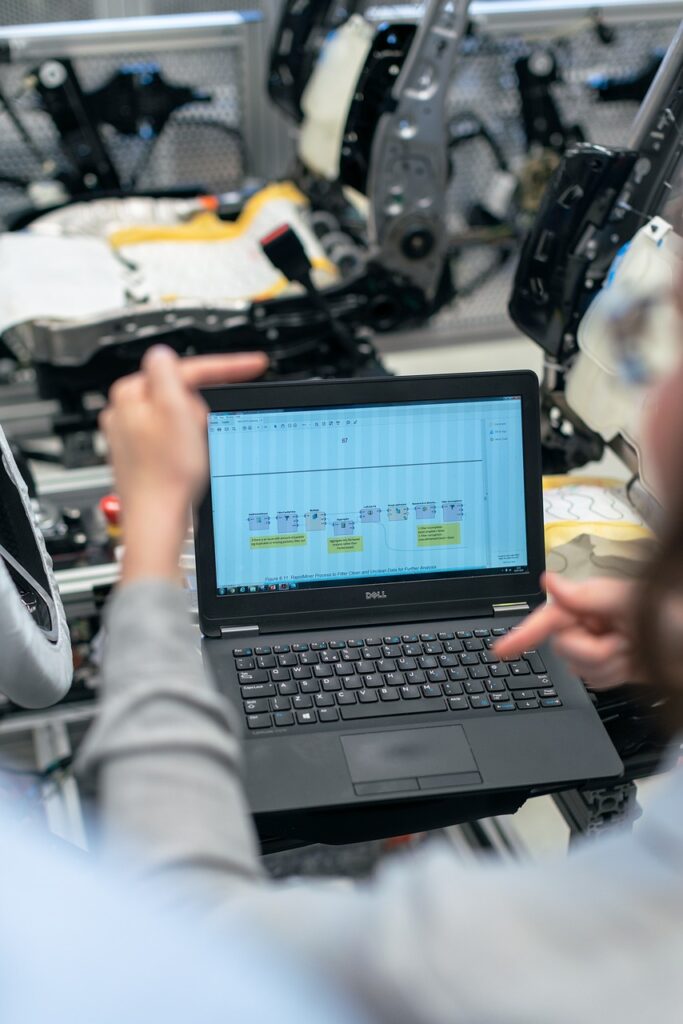Let's consider the importance of transitioning from 400 V to 800 V technology for electric vehicles
In one year, globally, approximately 80 million vehicles are purchased, with about 5 million being electric cars. In Europe, during the same period, around 20 million vehicles are bought, with nearly 3 million being electric cars. In Italy, approximately 2 million vehicles are purchased annually, with only 100,000 being electric cars. These are estimates based on recent sales, considering fluctuations due to uncertain political and economic conditions. It’s important to note that electric cars encompass various motor technologies, as previously explained in an article dedicated to electric vehicle charging. However, this introduction sets the stage for discussing the significance of transitioning from 400 V to 800 V technology.
Summary:
- 1. The sales numbers of electric cars in Italy, Europe, and worldwide
- 2. What is meant by 400 V and 800 V technology in electric motors?
- 3. What are the differences between 400 V and 800 V technology?
- 4. Conclusions
1. The sales numbers of electric cars in Italy, Europe, and worldwide
If 80 million vehicles are purchased worldwide and 5 million of these are electric, it means that 6.25% are electric cars. If 20 million vehicles are purchased in Europe and 3 million of these are electric, it means that 15% are electric cars. If 2 million vehicles are purchased in Italy and 100,000 of these are electric, it means that 5% are electric cars.

If the global estimate considers all countries, including those with insufficient economic development to ensure decent living conditions, it could be considered somewhat “biased”. However, the European estimate provides the most interesting data in the analysis. While economic conditions vary greatly among EU member states, they are still compatible for such a comparison. This comparison is strengthened by the fact that 10% of total cars purchased in Europe are bought in Italy. From this, one can deduce that for the majority of adult Italians, a car is a very important, often necessary, asset. However, for very few of them, an electric car seems to be a viable solution, as most people don’t even consider it an option. We’ve already discussed the issues and challenges related to the e-mobility sector. However, it’s important to emphasize that problems related to charging time and the significant variation in charging infrastructure between Italian regions are even more relevant than the often slightly higher initial cost. Therefore, introducing 800 V technology and explaining its importance is interesting, as it constitutes a fundamental piece in the progression of the electric motor’s history.
2. What is meant by 400 V and 800 V technology in electric motors?
For 400 V or 800 V technology in the electric motor, it refers to the nominal voltage of the vehicle’s electrical system, which includes the battery, the motor (or motors), the inverter, and the charging system. The nominal voltage is crucial for energy efficiency, charging times, driving performance, and, of course, the complexity of the electrical system, which leads to different construction and maintenance costs. Nominal voltage of an electric motor refers to the voltage for which it is designed and optimized to operate efficiently and safely. It is expressed in volts (V) and represents the ideal/standard voltage at which the electric motor should be powered during normal operation to ensure declared performance without safety or durability issues.
Despite the long history of the electric motor, it’s important to remember that it is still a technology in its early stages, largely due to its limited adoption. One could argue that, at least in part, it’s a vicious cycle: limited adoption also limits the spread of knowledge, but it’s only through the dissemination of knowledge that we can overcome the current limitations of the technology and, in turn, further its adoption. This is why investments in research and development by companies like De Angeli Prodotti play a fundamental role in the technological advancement of the electric motor.
3. What are the differences between 400 V and 800 V technology?
Before analyzing the differences between these two technologies, it’s important to understand the concepts of nominal voltage (i.e., 400 V and 800 V) and operating voltage.
3.1 System components, nominal voltage, and operating voltage

To understand the difference between the two technologies, we first need to understand what nominal voltage and operating voltage are. To do this, let’s briefly explain, in the simplest way possible, how the electric motor system works:
- Battery: the battery of an electric motor is designed to operate within a certain range of nominal voltage (400 V or 800 V), and consequently, the battery cells change configuration and connection based on this value.
- Electric motor and inverter: the electric motor is powered based on the nominal voltage value, and the inverter, while converting the direct current (DC) from the battery into usable alternating current (AC) for the motor, also manages the operating voltage.
- Charging system: this system is designed to accept voltages from the electrical grid or charging stations up to the value of the nominal voltage, allowing efficient charging within these limits.
As previously mentioned, the nominal voltage of an electric motor corresponds to a single value declared by the manufacturer, and it is the voltage for which the motor is designed and optimized. It represents the voltage value at which the motor should operate to achieve the best performance in terms of driving, charging, and efficiency, while staying within the specified parameters for durability and safety.
The operating voltage, on the other hand, does not have a single value as it is the voltage actually applied to the motor during its operation. This voltage can vary depending on the conditions of the electrical grid, load fluctuations, and the inverter. The operating voltage varies depending on the operating conditions and the age of the electric motor, but the closer it is to the nominal voltage, the better the motor performance will be.
So, the nominal voltage represents the value for which the motor is optimized, while the operating voltage varies and reflects the actual conditions to which the motor is subjected.
3.2 Differences: technology, performance, and costs
The differences between electric motors of 400 V and 800 V are numerous, but let’s summarize them in terms of technology, performance, and costs.
TECHNOLOGY
The first obvious difference is the operating voltage, which is reflected in the power handled by the electric motor: an 800 V system can handle the same power with half the current of a 400 V system. This results in better energy efficiency of 800 V electric motors. With lower currents for the same power, 800 V systems can reduce heat losses and increase efficiency.
From a construction standpoint, as you can imagine, 800 V electric motors require components (such as cables, inverters, etc.) capable of handling higher voltages, and therefore they must have better technology.
PERFORMANCES
In terms of performance, an 800 V electric motor can contribute to the development of e-mobility. Electric vehicles with an 800 V system have shorter charging times due to their ability to accept higher power during charging without overheating. Although the system voltage does not directly influence the motor’s performance, 800 V systems can facilitate the management of higher power, improving the driving performance of electric vehicles, such as acceleration, responsiveness, and maximum speed, all thanks to better overall efficiency.
Another fundamental factor, which does not directly depend on voltage but is a consequence of better overall efficiency, is the battery range, which is improved and consequently guarantees more kilometers between charges. This factor, in particular, is crucial for overcoming the fear of running out of charge between charging stations, especially considering the sparse network of charging stations in some areas of Italy.
COSTS
The 800 V electric motor is more expensive to design and produce due to the advanced materials needed to handle higher voltages. Consequently, even though 800 V systems have better efficiency and potentially fewer energy losses, the costs for replacing any worn-out or damaged components can be significant. Additionally, the charging infrastructure itself requires systems compatible with higher voltage, which are more expensive to build, install, and maintain.
4. Conclusions
In conclusion, while 800 V systems offer significant advantages in terms of efficiency and performance, these benefits are balanced by higher costs, both in terms of development and production, as well as charging infrastructure, which may, at least superficially, dampen enthusiasm. However, although higher costs may appear to limit adoption, they can be overcome thanks to the widespread dissemination of technology, coupled with the investment of pioneering companies in the energy transition process, such as De Angeli Prodotti, which are crucial in shaping the next chapter of the electric motor’s history, one capable of changing the course and directing it towards sustainability. Furthermore, improved performance, fast charging, and increasing offerings from major automotive brands will serve as a catalyst for more widespread adoption by Italian citizens.


